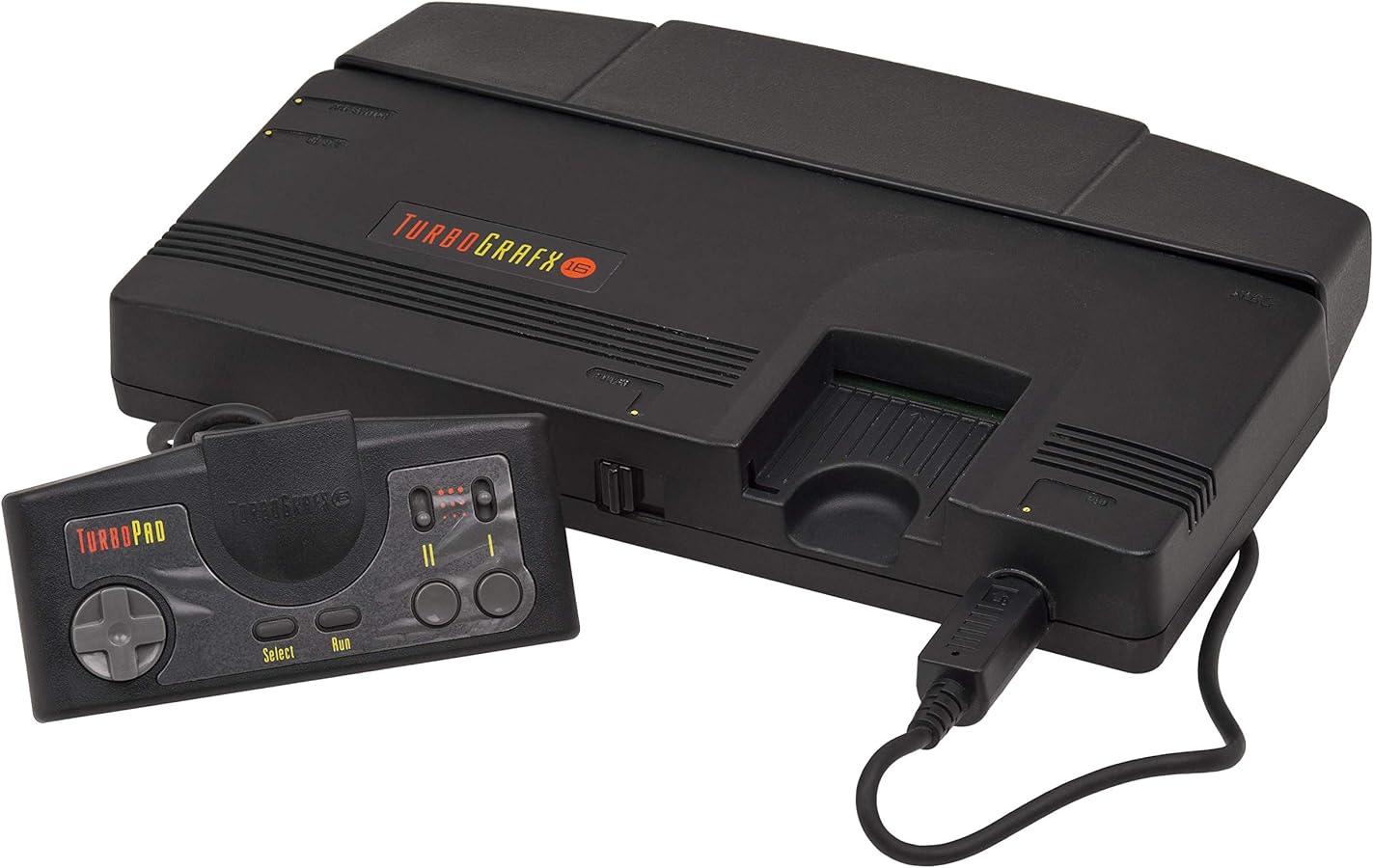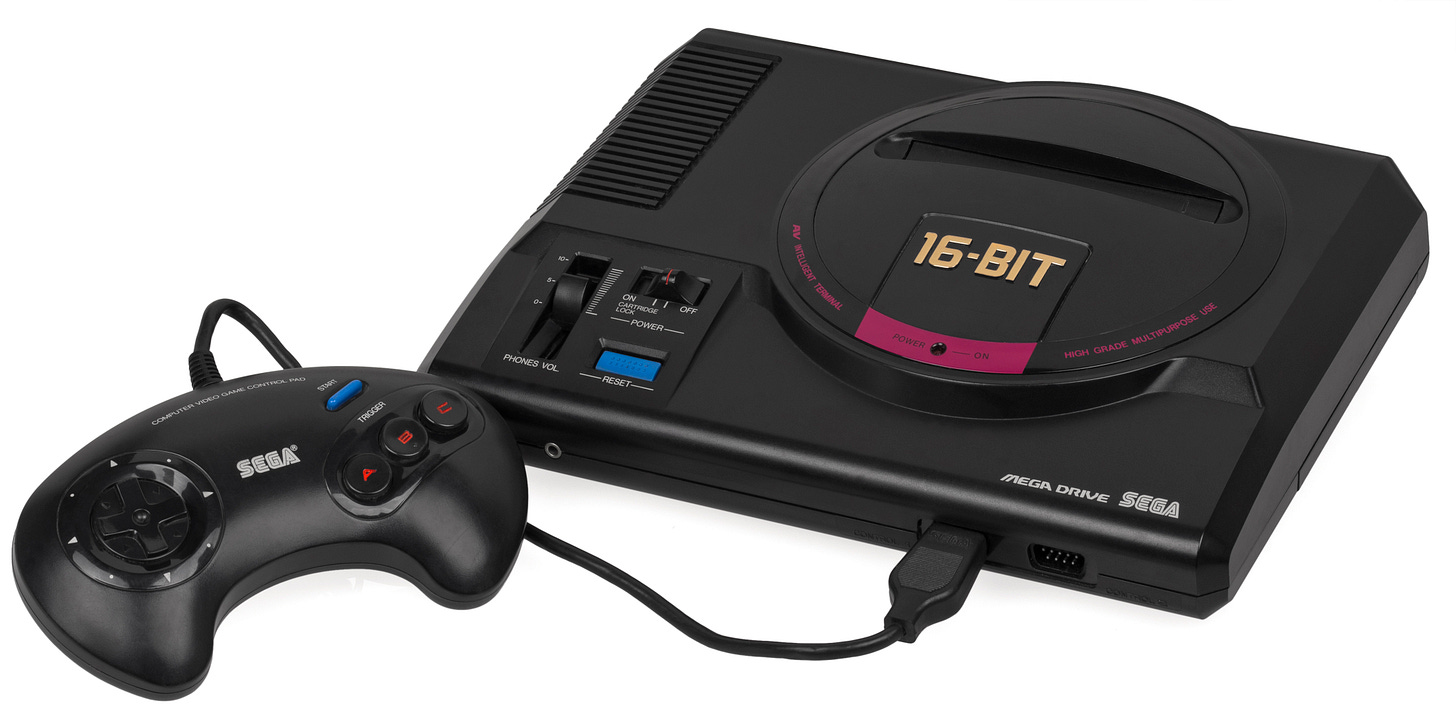History of Video Games - Part 8
Let's Make Lots of Money
Catch Up on the Series
3 - Have You Played Atari Today?
4 - The Great Video Game Crash of 1983
6 - Now You’re Playing With Power
Competition Arrives
Nintendo successfully revitalized the video game market worldwide. The name Nintendo became so synonymous with video games that, to this day, older generations call every video game system a “Nintendo.” The company thrived with the 80s kids wanting an NES and the meteoric rise of Mario becoming as famous as Mickey Mouse. With the commercial market for gaming back, it was only a matter of time before competition would come looking to get a ride on this new money train.
Nintendo, however, did have ways to take advantage of their new empire. Nintendo avoided what happened with Atari’s release output of bad games because of their policies on who got to release games on their console. They required a license for companies to produce cartridges for the system, and Nintendo, in turn, would charge a fee to make money from the best-selling third-party published games. While this is common practice in the industry today, Nintendo used it to put the fear of God into multiple companies to prevent them from making games for their competitors. Eventually, the walls would come down, but it would take a long time. It didn’t help that Nintendo President Hiroshi Yamauchi was known for being harsh and cold, leading to crazy rumors of involvement with the Japanese mafia.
Despite these barriers and Nintendo's abuse of power, competition would not be stifled. For starters, computers, such as MSX computers, would put a small dent in the Japanese market. You also had Sega, which had released the Sega Mark III (Master System in North America). Sega wasn’t quitting even after disappointing console sales and began developing a new system aimed at beating the Famicom/NES. Last but not least, NEC and Hudson Soft would team up to create their own system and leave a slight but important mark on the industry.
Two Brothers and Two Companies
Hudson Soft was founded by two brothers, Yuji and Hiroshi Kudo. They grew up loving trains and named the company after Hudson locomotives. At first, the company had a bit of an identity problem. It was going to be a coffee shop but then turned into a radio shop. Eventually, it started making computer software, and finally, it started shipping video games. They were among the first to support Nintendo’s new Famicom console and released Lode Runner with over a million units sold. This is when Hudson Soft changed everything and decided they would be a quality video game publisher.
In 1983, Hudson released Bomberman. It was a maze game in which players controlled a robot that used bombs to remove obstacles. While the character's design eventually changed to a more cute mascot-type character that many gamers know today, it was a major hit at the time that showed Hudson’s new business strategy was paying off.
NEC was one of the first major companies in Japan with the onset of industrialization. The company started as an electric company and eventually became a wide-ranging tech company, with computers becoming their staple in the 1980s. With the rise of video games and their popularity in Japan, the company decided to make a console but decided to contract with a gaming publisher rather than start creating studios. NEC reached out to Hudson Soft about a collaboration, and they accepted.
The two developed and made a game system called the PC Engine. The system was based on Hudson Soft technology, with an 8-bit CPU and two 16-bit graphic processors. It also had an incredible 512-color max palette with 482 colors on screen. This system completely lapsed around the Famicom/NES for days. At its October 1987 release, the system sold 500,000 units in its first week alone. NEC and Hudson Soft had created a viable competitor to Nintendo in Japan. After some delays, they would eventually release the North American variant in August 1989 and repackage it as the TurboGrafx-16.
Turbo
NEC and Hudson released the TurboGrafx-16 in North America but weren’t confident. There was a feeling the North American market was not going to embrace the system as well as Japan had. They also had the pesky issue of dealing with Nintendo and going up against Sega’s new console, which competed for that second spot. The two companies never really went all in like they should have, and eventually, that would prove to be the console’s undoing. The system would stay a success story only in Japan. Despite this, there was still a legacy it left behind, even if it took a long time for gamers to appreciate it.
Like many consoles of the early 90s, the system had several add-ons and variants. There was the CoreGrafx, which added composite AV and a CD-ROM expansion. They also came out with the TurboDuo, which combined the PC Engine with the Super CD-Rom expansion to make one system. This meant there were several models, a preview in many ways of something Sony’s PlayStation brand would do later with their revised consoles.
Despite its lack of success outside of Japan, the TurboGrafx-16 (or PC Engine, take your pick) has gained a more appreciated legacy among today’s gamers. Several consequential games came to the system and its CD add-on, including Bomberman, Bonk, Adventure Island, Legendary Axe, Super Star Soldier, Gradius, Ys I & II, Cosmic Fantasy 2, Castlevania: Rondo of Blood, and many more.
In 1994, NEC released a successor, the PC-FX. The system failed, and NEC pulled out of the video game market. Hudson Soft would release games on other platforms, with a major contribution to the Nintendo 64 specifically, and even teaming up to help Nintendo make some games. Konami acquired Hudson and even released the TurboGrafx-16 Mini console in 2020. While not as powerful as they used to be, there’s no doubt the impact they left.
Mega
With the Sega Master System not setting the market on fire, the company had its R&D team begin working on a viable true market competitor. Masami Ishikawa and Hideki Sato led the development. They decided to go for as much power as possible and targeted their Sega System 16 arcade cabinets; Sega would lean heavily on their arcade prowess. Sega would use the Motorola 6800 16-bit CPU as the heart of its new system.
The console's design would be based on audio equipment. The system was decided to target an older audience over Famicom’s younger consumer base. The audio player-looking device had a “16-bit” golden metallic veneer embossed into the system to tell the owner they owned a powerful machine. It was then announced in June 1988 as the Sega Mark V, but after a campaign of name proposals that saw 300 submissions - they settled on the Sega Mega Drive.
In October 1988, Sega launched the Mega Drive in Japan, but unlike the PC Engine, it didn’t start out hot. It probably didn’t help that the console launched a week after the release of Super Mario Bros. 3. In its first year, Sega only sold 400,000 units. Japan would stay firmly in the camps of the Famicom and PC Engine, so Sega looked to the rest of the world to help them sell their new machine. With that, the company looked to North America. Sega technically started as an American company, and they designed the system for an older audience, so if they could make it work with Uncle Sam’s consumers, they may have something.
Genesis
Sega originally wanted to launch the Mega Drive in January of 1989 in North America, but they had trouble looking for a distribution partner. The Tonka toy company had helped them with the Master System, but that relationship had taken a hit. After some talks with Atari, Sega decided to go at it alone and release it through their Sega of America subsidiary. The design of the Mega Drive was slightly altered, such as the golden “16-bit” lettering being changed to just white to avoid the color being called yellow and trying to keep with the cool aesthetic they were going for. Mega Drive became an issue to use because of copyright and trademarks already filed from another company, so Sega decided to change the name, landing on the Sega Genesis.
Sega of America CEO Michael Katz launched an aggressive marketing campaign. He decided to take on Nintendo head-on and created the infamous “Genesis does what Nintendon’t” marketing campaign. This campaign wouldn’t be afraid to call out Nintendo and boldly claim the Genesis was better than that kids’ stuff. They also heavily invested in celebrity endorsements and athletes to sell sports games. They even partnered with Michael Jackson to make the surprisingly good Michael Jackson’s Moonwalker. Despite all of this, Katz was tasked to sell a million units in the region, and he came up halfway short, only selling half a million units in the first year. Katz would be replaced by Tom Kalinske - the man who saved Barbie. And as they say, the rest would be history….






